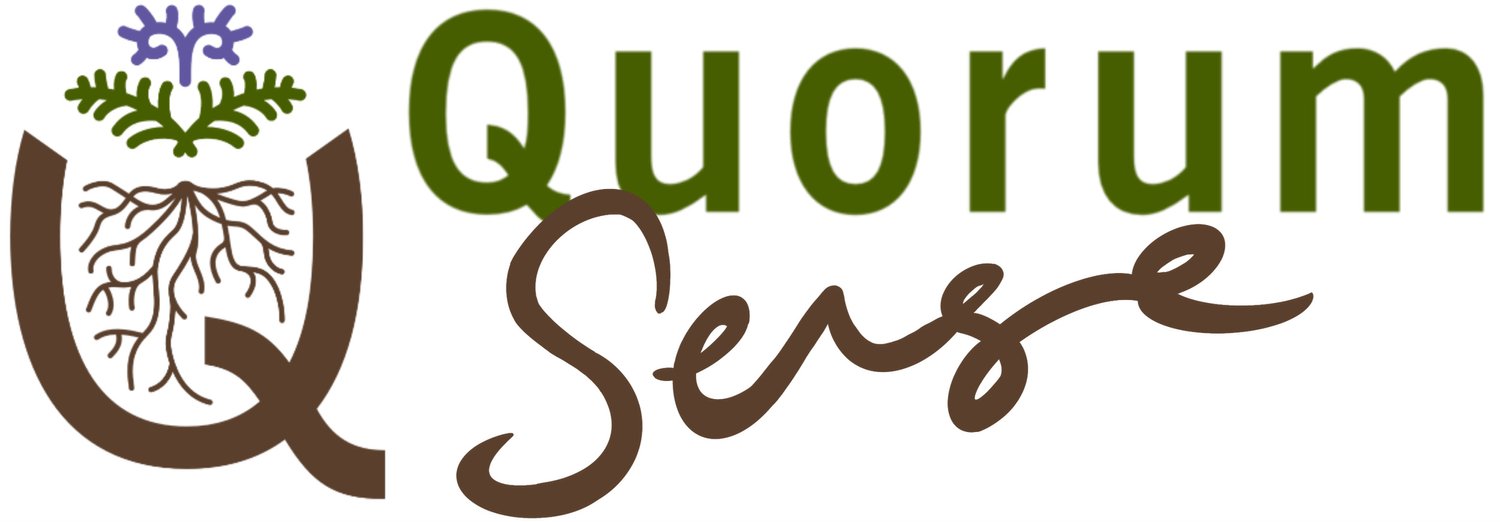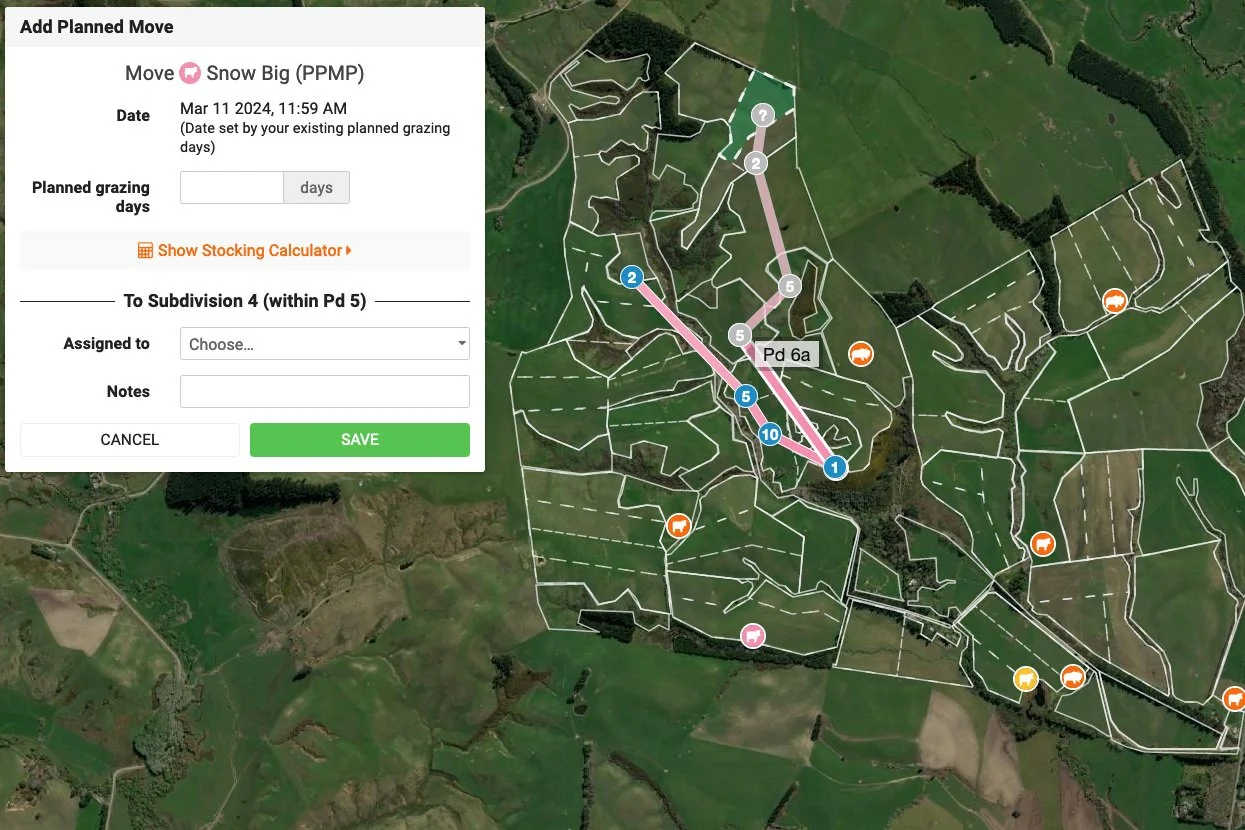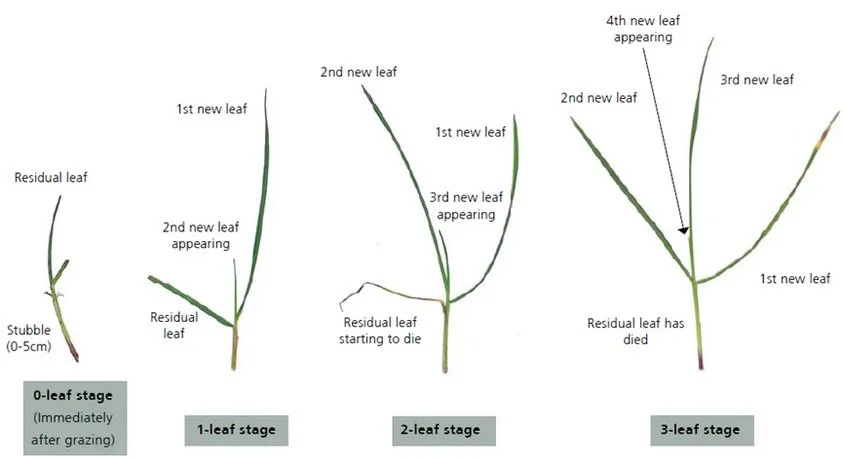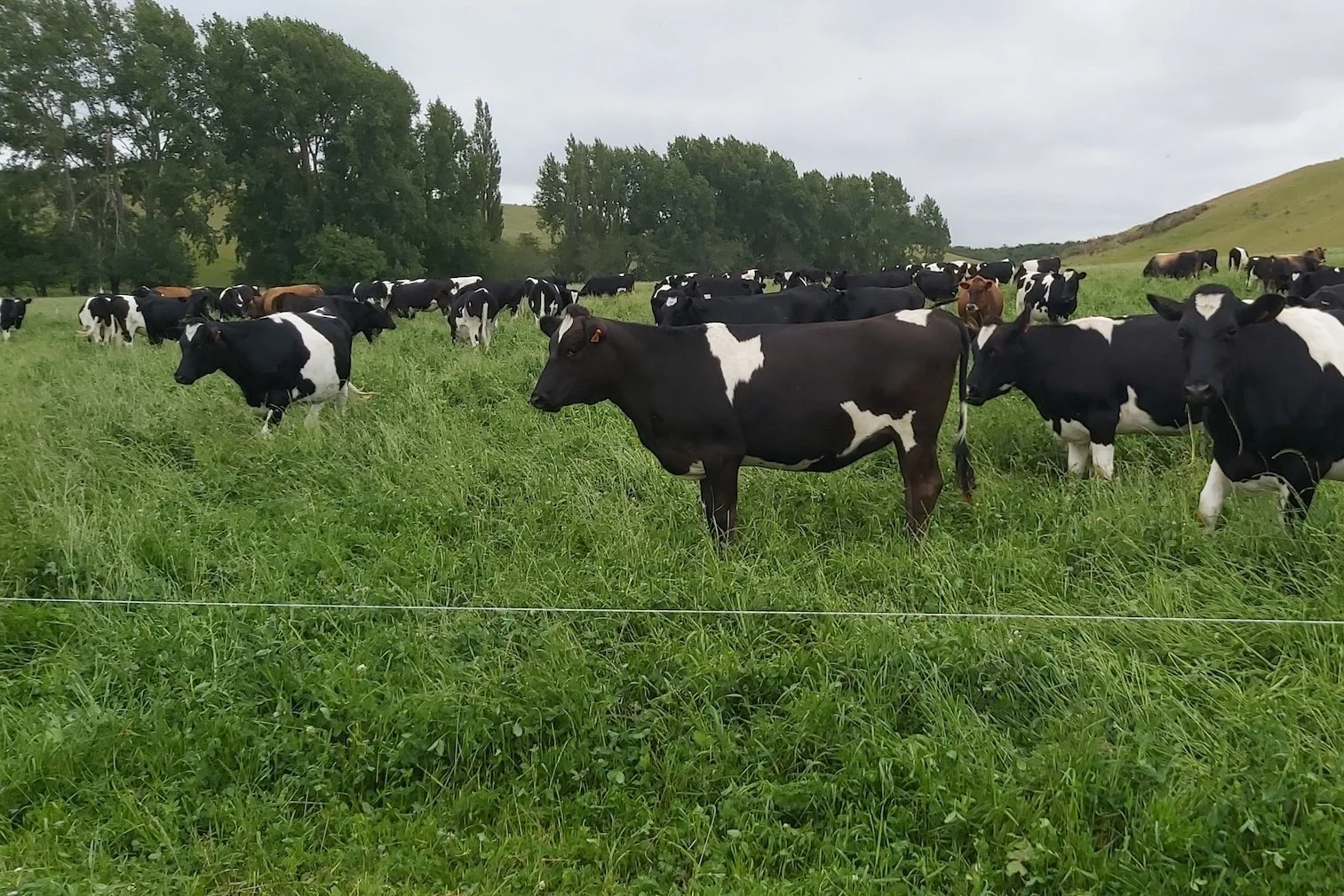Implementing regenerative grazing
Regenerative grazing management is flexible and not prescriptive. It does (and should) look different on different farms, in different seasons and under different grazing managers.
Below are some of the behaviours, considerations, tools and techniques that our 13 surveyed farmers combine in different ways, depending on their context.
Planning your regenerative grazing
Implementing regenerative grazing starts with a grazing or ‘recovery’ plan of some sort.
Some farmers use a farm map, others a holistic grazing chart, an excel spreadsheet, a farm management app, or just work it out in their head (not great for sharing though…). Arguably the planning process is more important that the tool of choice.The purpose of a grazing / recovery plan is to establish mob rotations and rotation lengths (also known as recovery periods) that allow adequate pasture recovery AND optimal feed quality for a particular class of stock. While these plans might be based on historical data, they are always adapting to current conditions affecting pasture growth and animal performance. Recovery periods will be shorter in fast growth periods and longer in slow growth periods.
Grazing / recovery plans may become more detailed and prescriptive in non-growing seasons (late summer and / or winter) when the amount of feed available is fixed and needs to last a certain amount of time until growth kicks in again.
Example of a Holistic Grazing Chart from Holistic Management International
A basic farm map showing heifer mob rotations with a ‘zones’ allocated for each rotation. Lower numbers are grazing intensively, higher number are marked for baleage/hay/deferred grazing.
Example of farm management software that helps farmers plan grazing periods and recoveries
Target recoveries and residuals
There are no rules or recipes for target recoveries and residuals, however the following has been observed:
Lactating ewes and any youngstock will perform better when plant leaf stage is <3 (ryegrass equivalent).
R2 and mature cattle can perform well between leaf stages 3-4 (ryegrass equivalent) allowing greater total forage production.
Grazing lower (high utilisation) generally increases the quality of regrowth but may compromise speed of plant recovery, therefore requiring longer rotations (sometimes referred to as ‘total grazing’)
Grazing only the top third or half of pastures can generate high animal performance and increased pasture growth. However, pastures will generally need to be ‘reset’ via hard grazing, trampling or topping at some point to maintain quality and diversity.
Repeated long recovery periods AND high residuals may suit selected contexts but in many places this can lead to a decline in pasture quality and animal performance over time.
In summer dry areas, lifting residuals and ensuring full pasture recovery in summer helps retain soil moisture and maximise pasture growth.
Ryegrass leaf stage diagram from the DairyNZ website where a fully grown 3rd leaf represents a ‘recovered’ grass plant - this is a general guide only as some grass species will produce more leaves per tiller (i.e. cocksfoot) and grasses may produce more or less green leaves before the first leaf begins senescence (depending on fertility, climate etc) (Source: https://www.dairynz.co.nz/feed/fundamentals/leaf-stage/)
Tools and techniques
Below are some basic descriptions of common tools or techniques utilised in regenerative grazing management that are less common in traditional or rotational grazing systems:
Mob grazing
Fewer-but-larger mobs moved more often than in typical rotational systems keep stock consistently full.
Helps improve the evenness of grazing, reduces graze periods, increases pasture recovery times, distributes dung and urine more evenly, etc.
Can trample and reset poor quality pasture.
Can positively or negatively impact animal performance so needs to be carefully managed.
130 R2 heifers shifted daily using temporary hot wires
Ultra-high density grazing
Mobs stocked at >200,000kg liveweight per ha within a break and moved 4+ times per day.
Generally used to reset or reinvigorate paddocks by severely grazing and / or heavily trampling pastures, spreading dung and urine evenly and stimulating the seed bank.
For most farmers this is a tool used selectively as it requires a lot of labour. Plus there’s an increased risk of stressing animals and lowering performance if not managed carefully.
Leader-follower
A technique to prioritise higher quality feed for young stock allowing them to perform on longer recoveries while still achieving some mob grazing benefits.
Generally young stock (i.e. ewe lambs) graze one break / paddock ahead of breeding stock (i.e. ewes / cows) but could also be R1 cattle followed by R2s, etc.
Follower mob job is to ensure even grazing and ‘reset’ of pastures. Can also contribute to refugia and reduce risk of drench resistance.
Deferred grazing with R2 heifers shifted twice a day, with most grass grazed or trampled and manure evenly distributed
Grass regrowth and new seedling germination following deferred grazing and a light rain
Deferred grazing
Spring (or occasionally autumn) pasture surplus saved or ‘deferred’ by shutting up paddocks when growth exceeds demand, offsetting some / all need for crops or supplements.
This can be grazed as ‘standing baleage or hay’ depending on timing of grazing.
Better feed quality can be achieved by selecting ‘better’ paddocks and ensuring they are grazed hard and evenly before being shut up.
Generally promotes an increase in pasture diversity and deeper roots.
Many grazing options available including; high utilisation strip/cell grazing in summer / autumn; low utilisation strip / cell grazing that tramples residual; a light grazing in summer / autumn then saving the bulk for winter.
Use an appropriate stock class and utilisation for the feed quality available. Supplements may be required to meet protein / energy requirements for some stock classes.
Has a beneficial impact on soil and pasture quality going forward and can be used on poorly performing paddocks to help improve them.
Microbe-friendly inputs
Complements the grazing goal of protecting and feeding soil microbes (with dung, urine and plant litter) so that they cycle more nutrients, improve soil structure and ultimately grow more and better grass.
Inputs such as fish, seaweed, humates, microbial brews, trace elements and slow release fertilisers are often used instead of, or in combination with, traditional inputs.
Diverse pasture featuring multiple grass species, clovers and herbs
Diverse pastures
Increasing the proportion and diversity of clovers, herbs and high fertility grasses in pastures can generate more consistent pasture growth and quality throughout the year.
High performing diverse pastures also have the ability to maintain pasture quality at higher covers than ryegrass, helping farmers maintain animal performance on longer recoveries (especially in summer).
Pasture diversity can be increased over time in different ways including through grazing management (allowing different species to compete and / or seed), oversowing (alone or with fertiliser), undersowing, or through standard cropping / pasture renewal.
(Note: Click on any underlined in blue word(s) in the text below to open a definition of that term).
Disclaimer: The information, opinions and ideas presented in this content is for information purposes only and does not constitute professional advice. Any reliance on the content provided is done at your own risk. (click here to view full disclaimer).
Toolbox index
-
Getting started with a regenerative approach to farming
-
Knowing where to start
-
About regenerative agriculture
-
-
Getting to know soil health
-
Soil health
-
Biological nutrient cycling
-
-
Managing your water cycle
-
Farmer experience
-
Exploring diverse crops / pastures
-
What are diverse crops or pastures (and how do I use them?)
-
Selecting, establishing and managing diverse crops and pastures
-
Farmer experience
-
-
Regenerative grazing management








